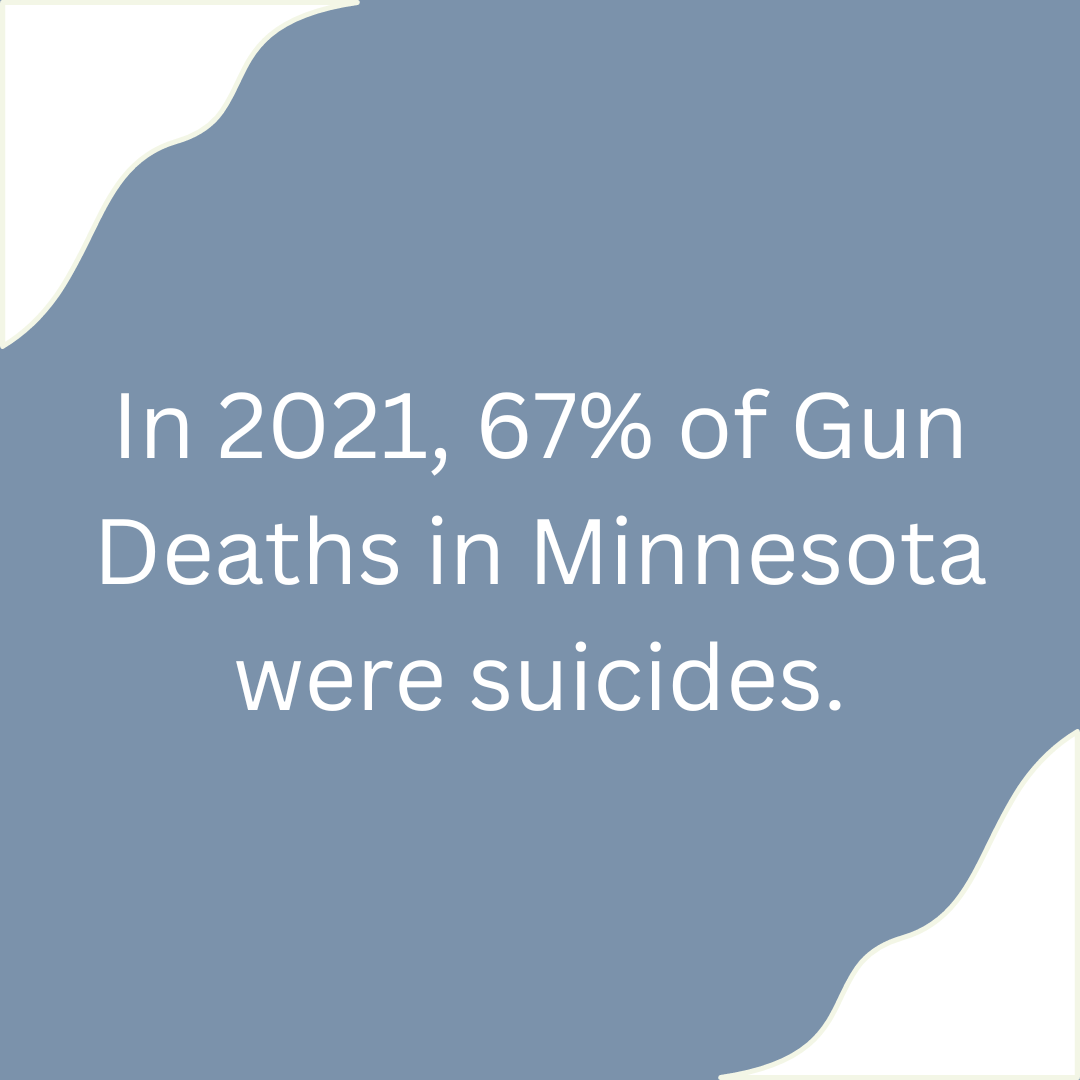What are Red Flag Laws? (10/9/2022)
One of the issues I hear about frequently from voters at the doors is the lack of action on gun violence in Minnesota. One woman stated her question to me like this. “Tell me what your position is on gun laws, if you are not advocating for new laws to restrict guns on our streets then you are simply not sincere in your support for better public safety.” My answer was that if someone needs to receive a license to drive a car they should also be required, in every instance, to pass a background check to own a firearm. I also believe Minnesota should join the growing number of state’s who have recently passed Red Flag Law’s.
This voter fully supported both these laws and knew exactly what Red Flag laws are. Not everyone does and too many myths abound. One thing is clear. In the absence of legislative action gun violence is getting worse not better.
Six out of every ten gun deaths in the United States each year are suicides. That equates to 24,000 suicides by gun every year. In general, a person attempting suicide has about a ten percent chance of actually dying, but if there is a gun involved the risk of death increases to 90 percent. There is action we can take to impact this public health crisis.
In the last ten years, suicide by gun nationally has increased by 12 percent. Among young Americans it has increased by 53 percent. Reducing access to firearms to those at risk for suicide is an effective way to prevent suicides.
Extreme Risk Protection Orders (Red Flag Laws)
Nineteen states already have Red Flag Laws on the books (also known as Extreme Risk Protection Orders) and they’ve been proven to work. After enacting its Red Flag law in Indiana, suicides decreased by 7.5% over a ten year period compared to nationally, the suicide rate increased by 12% in the same time period.
The myth that due process is violated with Red Flag laws is just that; a myth. Case law has withstood those challenges time and again in states that have these protection orders on the books.
How the Law Works
When it is apparent that an individual is a threat to others, or may be a threat to themselves, it is permitted for family members, law enforcement or a doctor to petition a court to seek temporary removal of firearms from their possession for up to a year. First the individual in question must be notified. Then there is a hearing with a judge. After the hearing there is a period of time before the final order is determined.
Red Flag laws provide law enforcement and family members a tool to intervene, to provide a reprieve at a time of crisis, when access to firearms poses a threat. Red Flag laws are designed to protect household members, law enforcement, the general public, as well as the individual.
Our current gun laws often allow access to firearms to people with dangerous behavioral tendencies. Extreme Risk Protection Orders are designed to address this problem in a meaningful way.
Vote to Support Candidates that Support These Laws
My voter at the door appreciated my position on this public safety issue. She affirmed her position that she will be voting for candidates that support action on gun laws and I had earned her support.
Most law abiding gun owners I speak to also support Red Flag Laws. My number one goal is to keep guns out of the hands of people who should not have them. Instituting Criminal Background checks and Red Flag laws by themselves will not solve the entire problem of gun violence. But statistically speaking, both will save lives and reduce gun violence. And progress in our public safety is what most voters are demanding from their elected officials. As long as I am in office I will be part of that solution, not part of the problem.
(Please note: If you or anyone in your life is in crisis, the National Suicide Hotline is 988).
Our next blog will be published on Sunday, Oct. 23rd.






